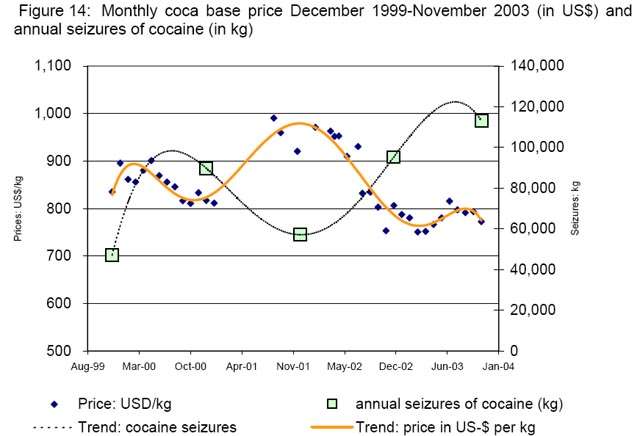« No progress on impunity | Main | Welcome bounty hunters! »
January 10, 2005
That stubborn "balloon effect"
Critics of U.S. drug policy often speak of the “balloon effect” – a term that refers to squeezing one part of a balloon, only to see it bulge out elsewhere – to describe drug crops’ constant tendency to pop up in new areas in response to forced eradication campaigns. Indeed, the past twenty years have seen the bulk of coca cultivation shift from Peru and Bolivia to Colombia, and then from region to region within Colombia.
In August, Drug Czar John Walters told reporters that the Bush administration’s anti-drug program, centered on aggressive aerial herbicide fumigation in Colombia, had finally beaten the dreaded balloon effect.
In regard to coca cultivation, for the first time, I think, in the last 20 years, the aggressiveness with which things are being pressed in Colombia is so aggressive, it has not been able to respond by growing elsewhere. There have basically been static rates of cultivation in Peru and Bolivia, which have been the previous areas and still are areas of significant cultivation.
Indeed, State Department measures showed no significant increases in Peruvian and Bolivian coca cultivation in 2002 and 2003, even as Colombian coca acreage appeared to be shrinking.
One reason this may have been so was a stubborn inability of coca prices to increase. While the street price of cocaine has failed to rise (the effect you’d expect from a shrinking supply), nor had the price of the basic paste that campesinos make from coca leaves. As this graphic from a very useful early 2004 UN report (PDF format) indicates, the price of coca paste, measured in dollars, had not budged four years into Plan Colombia.

With coca paste averaging $793 per kilogram in 2003, the UN estimates (large PowerPoint file), a hectare of coca offered a peasant a net income of $199 per month, or just over $6 per day. (Meanwhile, each kilogram of coca will be turned into hundreds of grams of cocaine, each of which will sell on U.S. streets for roughly $100.) At those prices, it is likely that relatively few Peruvian and Bolivian campesinos were finding the illicit crop to be worth the risk.
That may be changing. Reuters reported this weekend that, for the first time in a while, the past few months have witnessed an increase in the price of coca paste. Fumigation, combined with the “Plan Patriota” military offensive in southern Colombia, may be making the raw material scarcer in Colombia.
It still looks unlikely, though, that this increase will affect the price and availability of cocaine in the United States, for a simple reason: the balloon effect is still with us.
Citing the head of Peru’s anti-drug agency (DEVIDA), Fernando Hurtado, the Reuters story notes that Peruvian coca cultivation probably rose in 2004 and is expected to increase again in 2005. “The rise in growing areas means some 160 tons of cocaine were produced in Peru in 2004 – 20 percent more than in 2003 – with a street value in the United States of $2 billion.”
So after years of coca cultivation rising in Colombia and falling in Peru, it looks as though we are now about to see the reverse happen – which would keep the region-wide cocaine supply from dropping. That, of course, is the very definition of the balloon effect. So here we go again.
Posted by isacson at January 10, 2005 09:15 PM
Trackback Pings
TrackBack URL for this entry:
http://ciponline.org/cgi-bin/mt-tb.cgi/36
Comments
Post a comment
Thanks for signing in, . Now you can comment. (sign out)
(If you haven't left a comment here before, you may need to be approved by the site owner before your comment will appear. Until then, it won't appear on the entry. Thanks for waiting.)